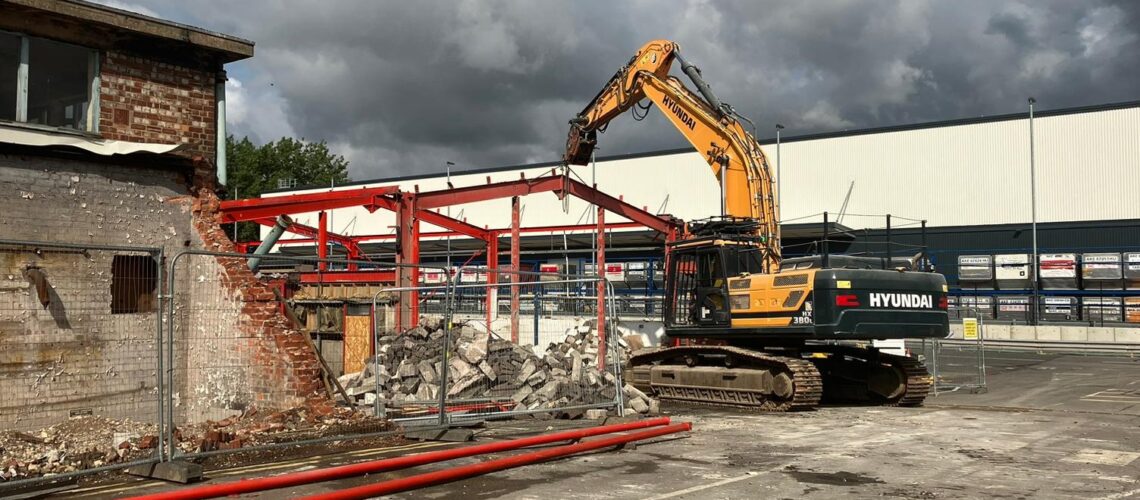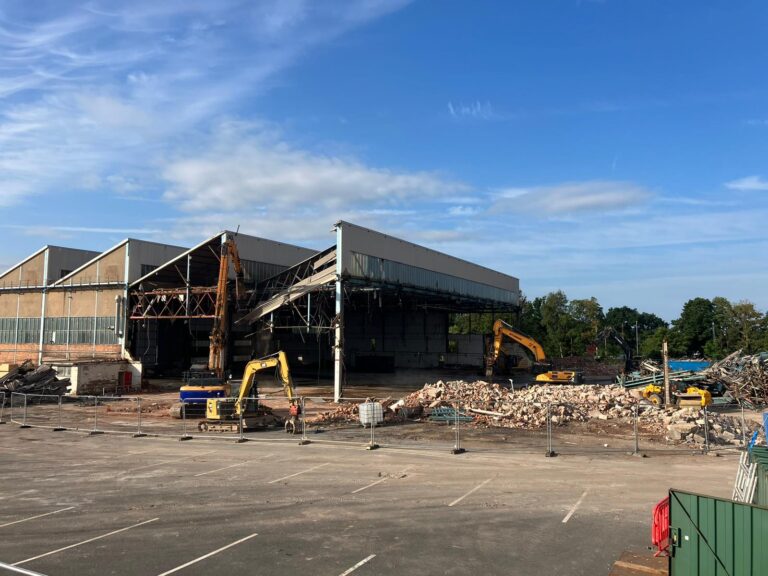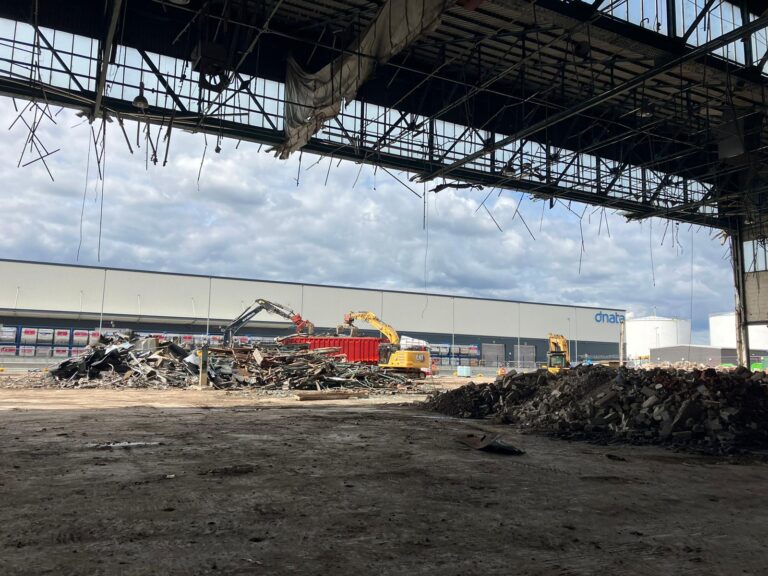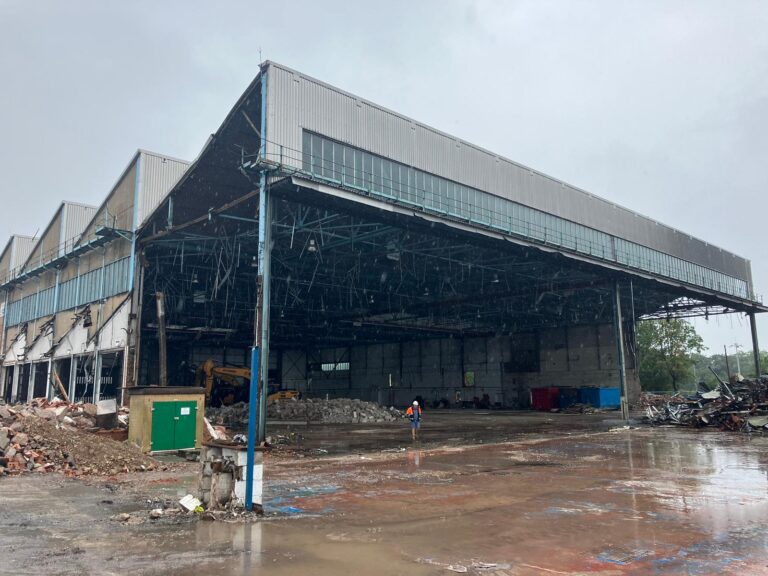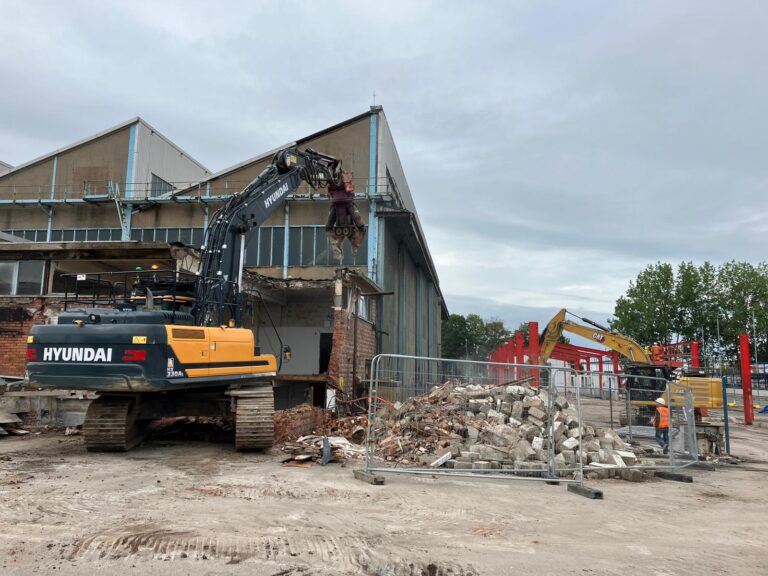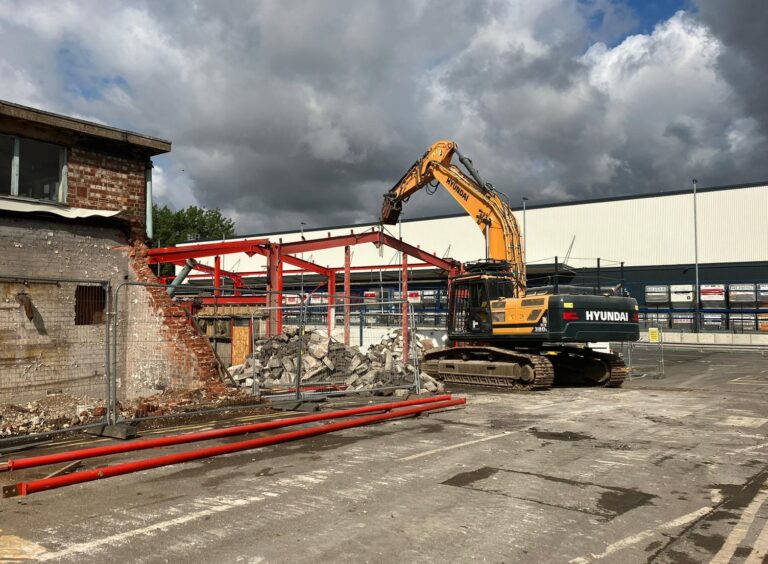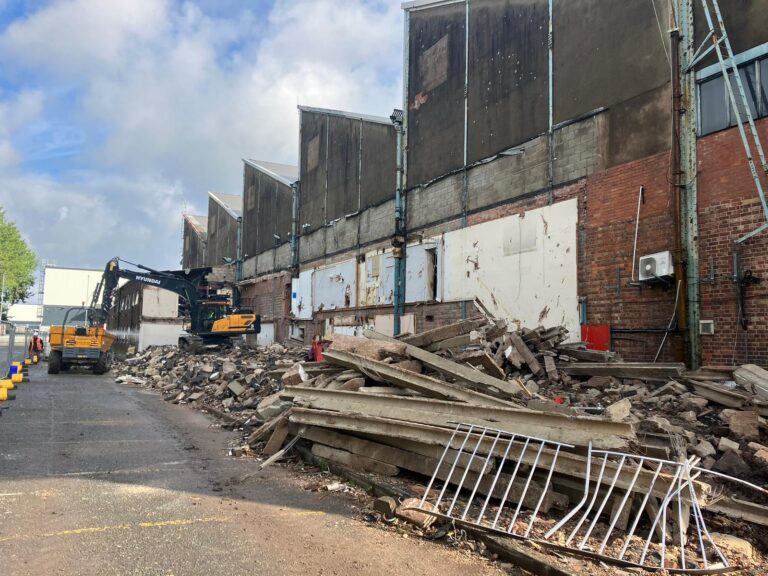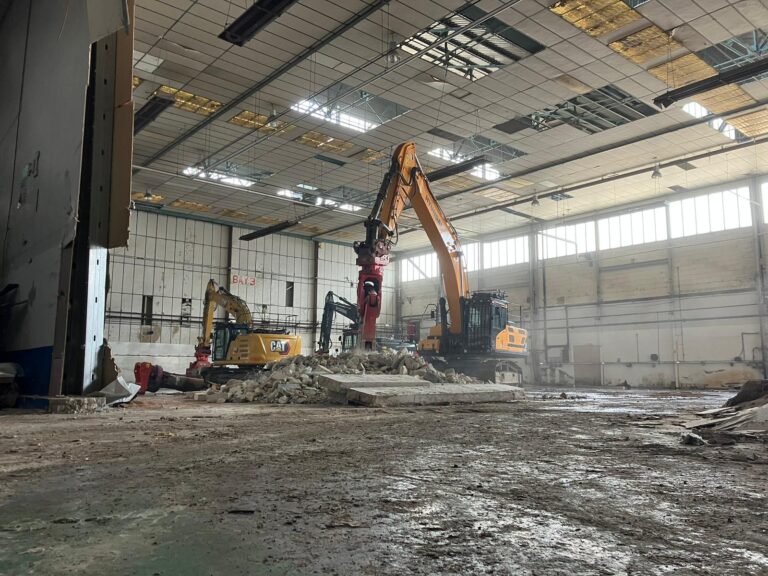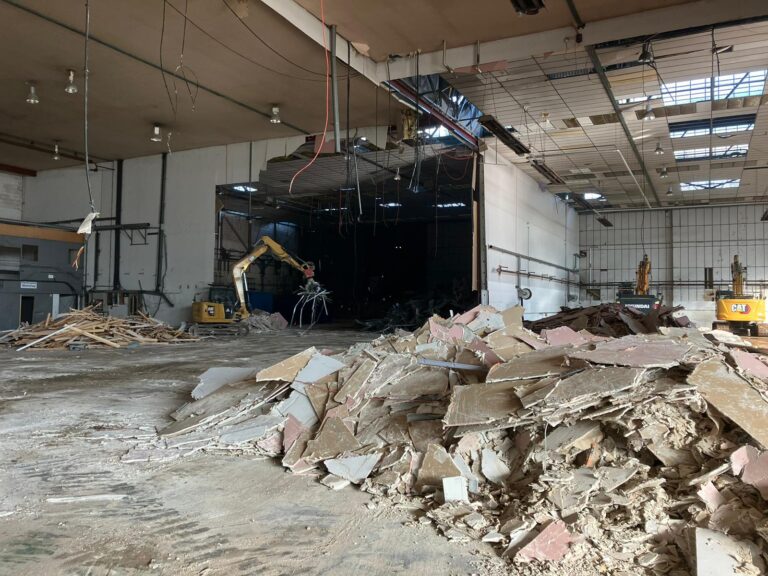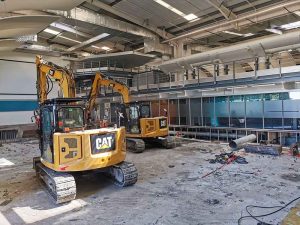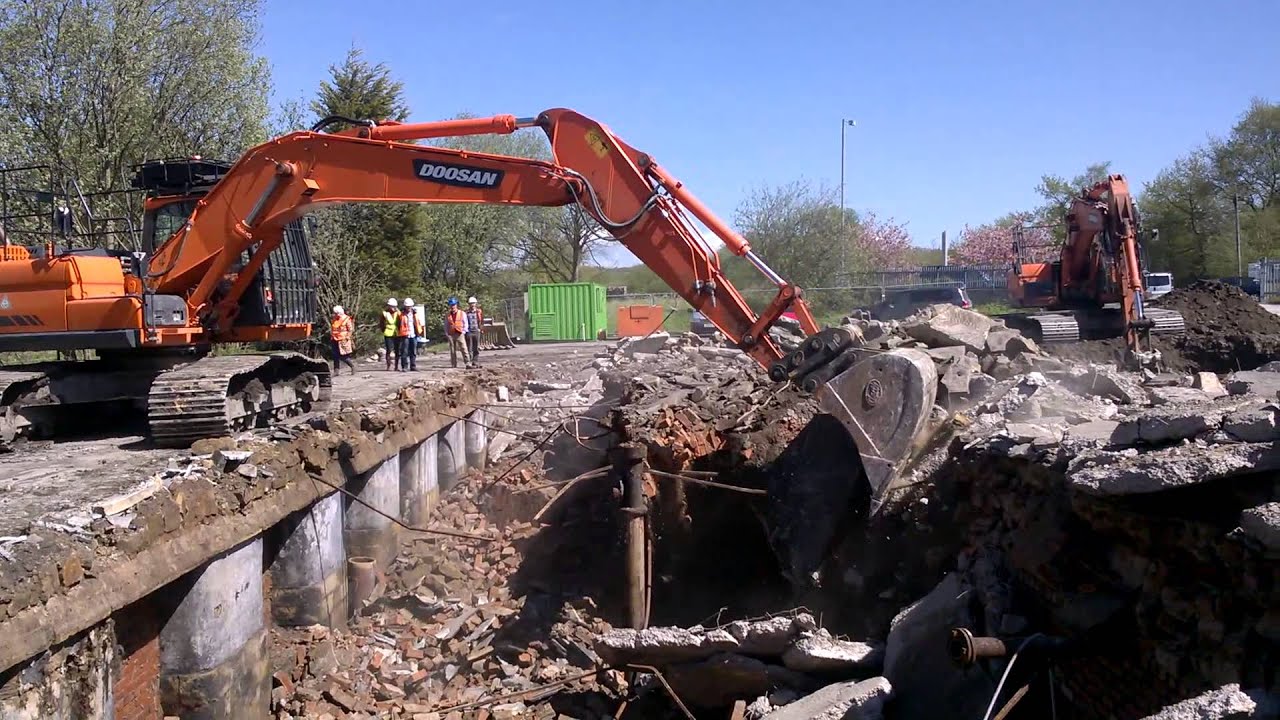Hardcore Crushing Ltd recently completed a high-profile airport demolition project at one of the North-West’s airports, where we have carried out several projects over the years.
This scheme involved a programme of initial asbestos removal followed by the internal ‘soft-stripping’, which involved the removal of all remaining internal chattels; fixtures & fittings; lightweight partitions; linings; suspended ceilings; mechanical and electrical services; trunking; ducting; bracketry support, and general waste materials; ensuring that the buildings are cleared back to the main shell, so far as necessary, and ready for the structural demolition.
Complex Airport Demolition Project
As part of these early ‘clear-out’ works, there were some high-bay metal partition walls and two large high-level suspended plasterboard ceilings throughout the vehicle maintenance and storage bays, which needed to be removed, so the demolition ‘big-guns’ machinery was brought in early in the airport demolition project to dismantle these as they stood at c.10m high and would have been too time consuming to strip by hand from Mobile Elevated Work Platforms…plus we had the space in which to operate the larger demolition equipment, so it was the ideal speedy solution.
Once the Hangar building and the ‘lean-to’ two-storey offices had been cleared out internally, we commenced the superstructure demolition, starting with the external offices and other low-level attached structures around the perimeter of the main hangar until all that remained was the empty aircraft hangar shell itself, which essentially comprised a massive clear-span steel ‘North-Light’ frame with both the long-elevations filled with masonry panels and with the huge hangar doors at each end of the building.
A high-reach demolition excavator was employed to raze the structure to the ground, and this was achieved by carefully ‘pushing in’ the external masonry walls onto the floor slab inside, where all the hardcore arisings were then to crushed on site to produce 6F2 recycled aggregate for the Client to then use in the permanent works, and after that dismantling the large steel frame itself removing one bay at a time starting at one end of the structure and working our way along until complete.
As we were working on an airport demolition project, one of the key considerations was to ensure that we guarded against the potential generation of ‘FOD’ – (Foreign Object Debris) from the works, i.e. lightweight waste materials such as insulation and partitioning materials, which could potentially be picked up by the wind and carried into the path of aircraft, which is the last thing that could be allowed to happen, so during the soft-stripping and waste removal works we ensured that skips for the waste were located within the confines of the main hangar building thereby protecting them from inclement weather and ensuring that materials couldn’t become airborne. Also, all wagons and skips were sheeted over before leaving the site.
Recycling Materials from our Airport Demolition Project
During the demolition and dismantling activities, all the materials arising from the works were carefully picked and segregated into the following categories:
- Asbestos-containing materials (Destination Hazardous Landfill)
- General waste products (Sorted and picked via a local Recycling Centre)
- Metals –Ferrous & Non-Ferrous (Recycled via local Metal Recyclers)
- Timber, Glass and Plastics (Recycled via a local Recycling Centre)
- Concrete; Blockwork; Brickwork & Macadam (Recycled to 6F5 grading specification and retained on site by the Client for use in the permanent works)
The airport demolition project generated approximately 2,700 tonnes of materials, the vast majority of which was recycled, leaving only c.25 tonnes that went to landfill (primarily asbestos and waste insulation materials), which meant that more than 99% of the entire building was recycled and reclaimed making a very ‘environmentally friendly’ contract and scoring highly on the Building Research Establishment Environmental Assessment Method (BREEAM) chart.
The whole project was delivered on programme and to budget It was another successful project for the team at Hardcore Crushing Ltd with help from the asbestos specialists at our ‘sister company’ Anglo Asbestos Ltd.

